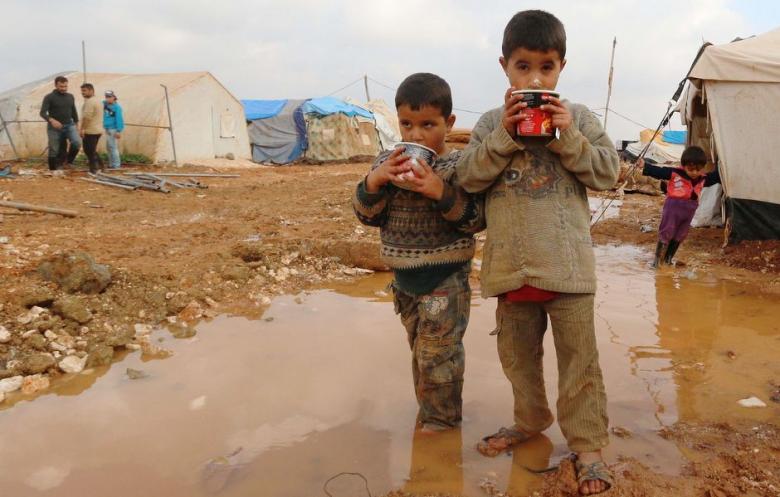Photo Credit: AFP / Baraa al-Halabi

Refugee Ceilings and Admitted Refugees to the U.S., FY 2009-2014, American Immigration Council, 2014
The Syrian Civil War has created the largest refugee crisis of the twenty-first century. Some 40% of Syria’s population has been forced to leave their homes and seek safety elsewhere, either abroad or in Syria itself. As millions of refugees pour out of Syria and into relatively unstable neighboring countries, the western world struggles to respond in any significant or sustainable way.
The US announced on September 10 that it will commit to taking in 10,000 Syrian refugees over the next fiscal year beginning October 1. This is a notable commitment given the US has only resettled 1,500 Syrian refugees since the civil war began. Just ten days later Secretary of State John Kerry announced that the US will up its annual refugee intake from the current 70,000 to 100,000 by 2017, in an attempt to aid in the crisis.
The US commitment to resettling refugees is important for two reasons: 1) the number of displaced persons worldwide is at its highest point in history and will only continue to grow, indicating the need for greater international cooperation between major countries and 2) the US is able to resettle a significant number of the displaced given its large geographic size and economy. The US is poised to be a key voice in the future of international migration policy as it is reshaped by the crisis.
The current public discourse in the US on refugees and asylum-seekers is largely driven by tensions between national security and international responsibility, leading to immigration flows that are heavily monitored and often criminalized. An emphasis on National Security limits the discussion of migration policy to short-term solutions such as border walls and precludes discussion of long-term structural changes to normalize migration through improved legal systems to screen and process asylum requests and refugees.
Many of the Central Americans who came to the US border last year are still awaiting their asylum hearing inside a detention center or under the close eye of the federal government (aided by electronic ankle bracelets). These attempts to control migration into the US have not seen much success either in stemming the flows or in quick processing.
As migrant detention centers come under fire across the western world for inhumane conditions and the criminalization of non-criminals, the US dependence on these centers has also garnered heavy scrutiny by the public. In the case of family detention, a US district judge recently ordered the federal government to release immigrant children from detention centers, reasoning that “immigrant children cannot be held in secured facilities that aren’t licensed to care for children.” (This order has been appealed by the Obama administration and the release of the children is uncertain at this time.)
Although the US is upping its intake of those displaced from the Syrian conflict, its actions are not effectively addressing the long-term implications of growing international migration, nor keeping pace with the asylum-seekers and refugees already awaiting resettlement within its borders.

